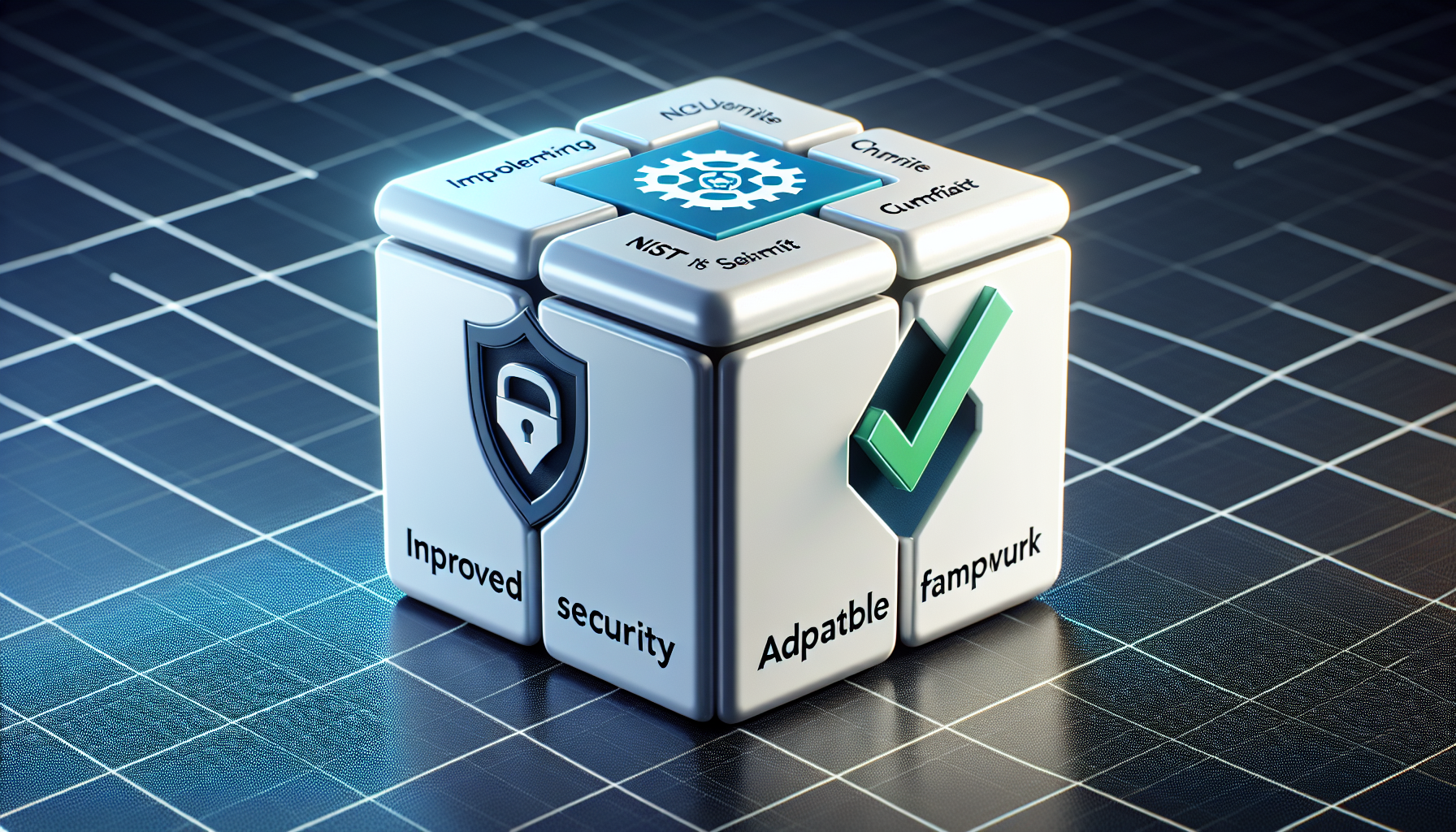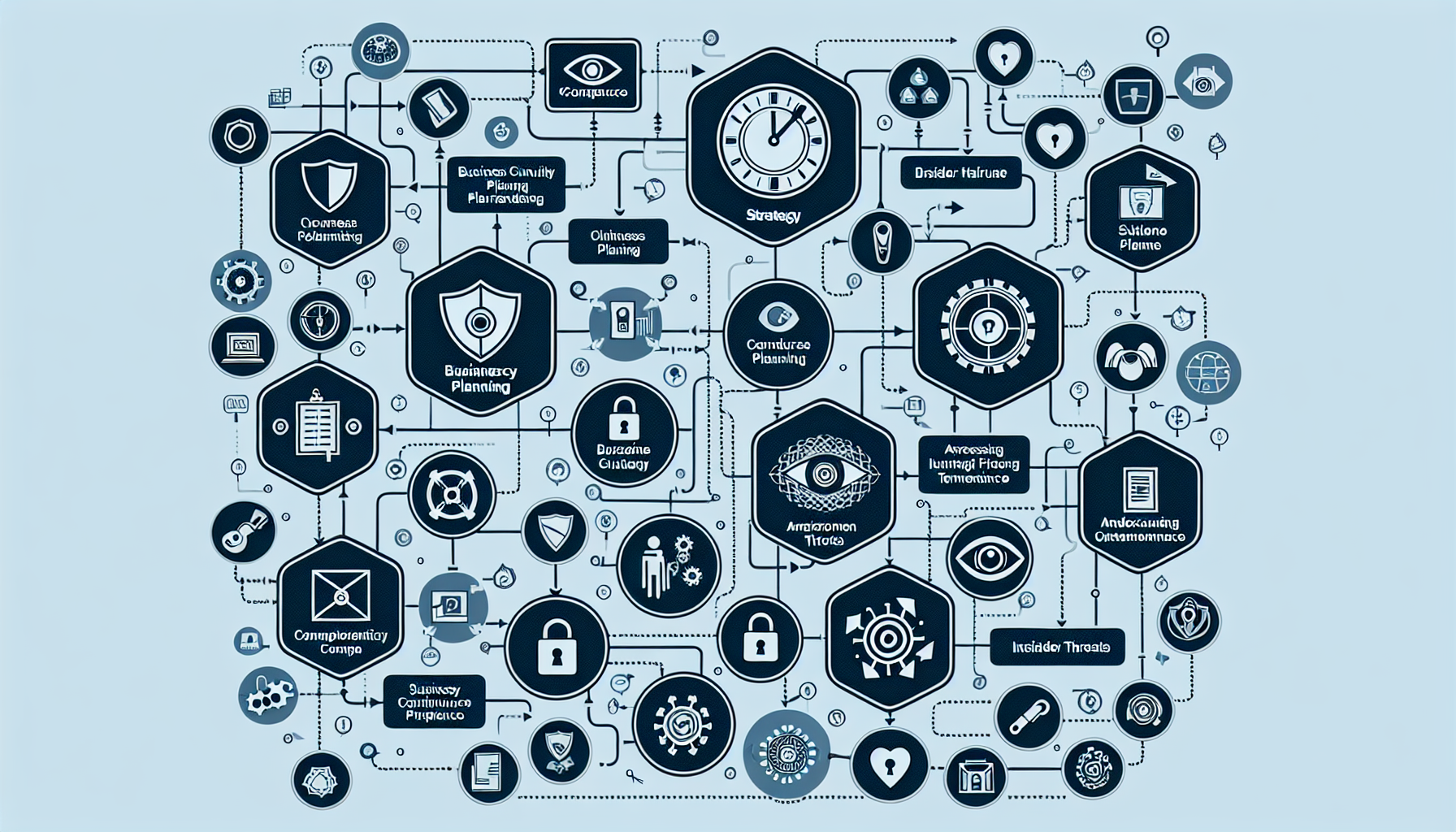
Do you need to implement or upgrade your cybersecurity to meet NIST 800 53 standards? Our guide breaks down the essential components and compliance steps, critical for federal agencies and their partners. Understand why NIST 800 53 is crucial for protecting federal information systems and how it can reinforce your security posture against modern cyber threats.
Key Takeaways
- NIST SP 800-53 is a comprehensive cybersecurity framework mandating federal agencies and related entities to implement specific security controls and risk management strategies to protect sensitive information and systems.
- The framework comprises 20 control families covering various aspects of security such as access controls, incident response, and system integrity, alongside a detailed Risk Management Framework (RMF) that provides a structured approach to managing cybersecurity risks.
- Adherence to NIST SP 800-53 ensures compliance with the Federal Information Security Modernization Act (FISMA), aids in obtaining an Authority to Operate (ATO) for systems, and offers numerous benefits including improved cybersecurity posture and flexibility to adapt guidelines to various organizational needs.
Understanding NIST SP 800-53: The Foundation of Federal Cybersecurity

Despite the complexity of the acronym NIST SP 800-53, its purpose is actually quite simple. It stands for the National Institute of Standards and Technology Special Publication 800-53, a cybersecurity standard tailored for federal agencies and contractors. Introduced in February 2005, this standard offers a plethora of guidelines for risk management and security controls, ensuring the protection of sensitive information and critical systems.
Federal government agencies and organizations dealing with them find NIST SP 800-53 to be an invaluable tool. Its purpose is to enhance the risk management of any organization or system involved in processing, storing, or transmitting information, including national security systems. This adherence to NIST SP 800-53 is not just a matter of best practice but a legal requirement.
The Federal Information Security Modernization Act of 2014 (FISMA) mandates federal agencies to:
- Establish, document, and implement a comprehensive information security program
- Meet federal information processing standards
- Use NIST SP 800-53 to meet these obligations.
Decoding the Purpose of NIST SP 800-53
Taking a closer look at NIST SP 800-53, its primary aim is to fortify the security of federal information systems. Additionally, it provides a structured framework that allows organizations to improve their cybersecurity practices. How does it do this, you ask? By providing a set of guidelines for implementing security controls and risk management practices. Through these guidelines, NIST SP 800-53 helps organizations identify and manage potential risks, ensuring that they are well-equipped to respond to and recover from cybersecurity incidents.
This standard is not just about preventing cyber threats. It’s also about ensuring business continuity in the face of such threats. By implementing the security controls outlined in NIST SP 800-53, organizations can ensure that their operations continue smoothly, even when faced with a cybersecurity incident. This is particularly critical in today’s digital age, where even a minor disruption can have significant operational and financial implications.
Navigating the Control Families
At the heart of NIST SP 800-53 are its 20 control families. Each one covers various aspects of information security and privacy, including:
- physical and environmental protection
- access controls
- audit and accountability
- configuration management
- contingency planning
- identification and authentication
- incident response
- media protection
- system and communications protection
- system and information integrity
The guidance provided by NIST SP 800-53 on access controls is particularly noteworthy. It delves into the design, implementation, and operation of necessary controls to ensure appropriate access control mechanisms and overall information system security.
The control families in NIST SP 800-53 span across 20 specific areas, covering critical topics such as:
- Access control
- Incident response
- Business continuity
- Disaster recovery
If you’re looking for comprehensive information on these control families, the NIST website is the place to go. It provides a detailed Security Control Catalog documenting safeguards prescribed for information systems.
The Scope of NIST SP 800-53 Compliance

So, who needs to comply with NIST SP 800-53? The short answer is federal agencies, contractors, and organizations that manage sensitive federal data. This includes federal information systems, agencies, and government contractors, along with departments that collaborate with the government. For these entities, compliance with NIST SP 800-53 is not just recommended but also mandated.
Obtaining an Authority to Operate (ATO) signifies compliance with NIST SP 800-53. In simple terms, an ATO is a formal declaration that authorizes an information system to operate. It is granted to organizations that have demonstrated compliance with the requirements of the agency they are contracted with. In essence, an ATO is a seal of approval, indicating that an organization’s information systems meet the stringent security standards set by NIST SP 800-53.
Delving into the Risk Management Framework
The Risk Management Framework (RMF), a critical component of NIST SP 800-53, is integral to cybersecurity risk management. It’s a process that integrates security, privacy, and cyber supply chain risk management activities into the system development life cycle. The RMF offers a structured and systematic approach to identify, assess, and mitigate risks, aiding organizations in effectively assessing and monitoring their cybersecurity posture.
The RMF encompasses seven key steps:
- Preparation
- Categorization of information systems
- Selection of security controls
- Implementation of security controls
- Assessment of security controls
- Authorization of information systems
- Monitoring of security controls
This systematic approach allows for the integration of risk management processes into the system life cycle, helping organizations mitigate potential risks and strengthen their defense against cyber threats.
One of the critical components of the RMF is security continuous monitoring. This involves:
- The ongoing surveillance of an organization’s information systems and assets to detect cybersecurity events
- Evaluating the efficacy of deployed security measures
- Identifying anomalies, such as unauthorized access or atypical network activity
This process is crucial in maintaining a strong cybersecurity posture.
Risk Assessment Fundamentals
According to NIST SP 800-53, risk assessment involves:
- Evaluating and developing a risk mitigation plan for information security systems
- Understanding the vulnerabilities and threats faced by an organization
- Recognizing and prioritizing potential risks to information systems and data
- Facilitating informed decision-making concerning the implementation of suitable security controls and safeguards.
The procedures for conducting a risk assessment involve the following steps:
- Preparation
- Categorization
- Selection
- Implementation
- Assessment
- Authorization
This systematic approach to risk assessment not only helps organizations identify and evaluate risks but also prioritize them. This allows organizations to allocate resources effectively and prioritize mitigation efforts, thereby strengthening their overall cybersecurity posture.
Implementing Security Controls
The implementation of security controls is a fundamental aspect of risk management. It involves:
- Identifying and classifying sensitive data
- Conducting a cybersecurity evaluation through risk assessment
- Establishing security control baselines
- Utilizing control enhancements
- Documenting controls for compliance purposes.
Crucial factors to consider when implementing these controls include:
- Selection of suitable controls aligned with organizational requirements
- Establishment of access control and business continuity policies
- Adherence to FISMA regulations
- Periodic updating of controls to mitigate evolving threats.
NIST SP 800-53 offers best practices and recommendations for the selection and implementation of these controls, making it an invaluable resource for organizations aiming to enhance their cybersecurity posture.
Key Benefits of Implementing NIST SP 800-53

Implementing NIST SP 800-53 brings forth a myriad of benefits. It offers a set of guidelines and state-of-the-practice controls intended to:
- Strengthen information systems
- Assist organizations in effectively managing cybersecurity risks
- Maintain a strong security posture against cyber threats
Moreover, by adhering to NIST SP 800-53, organizations ensure compliance with federal regulations that oversee the security of U.S. federal information systems, guaranteeing adherence to the necessary security controls mandated by law.
The adaptability of NIST SP 800-53 distinguishes it from other standards. It caters to organizations of different sizes and types by offering a scalable and adaptable framework. This flexibility allows organizations to customize the security and privacy controls to suit their individual situations and risk profiles, making NIST SP 800-53 a versatile tool for improving cybersecurity across various sectors.
Privacy Controls: Safeguarding Sensitive Data

In NIST SP 800-53, privacy controls have a crucial role. They safeguard sensitive data, including personally identifiable information (PII) and other forms of personal data. These controls implement measures to protect the critical operations and assets of organizations, as well as personal information. They address a diverse set of security and privacy requirements and help lower the risk of unauthorized access to sensitive data.
NIST SP 800-53 defines PII as any information that can be used to distinguish or trace the identity of an individual, either alone or when combined with other information that is linked or linkable. Controlled Unclassified Information (CUI) is defined as information that is unclassified but still requires safeguarding or dissemination controls. By implementing the privacy controls outlined in NIST SP 800-53, organizations can ensure the protection of such sensitive data, thereby enhancing their overall cybersecurity posture.
Strategies for Achieving NIST SP 800-53 Compliance

A variety of strategies are involved in achieving NIST SP 800-53 compliance. These include:
- Business continuity planning
- Disaster recovery planning
- Addressing insider threats
- Supply chain security
Implementing such strategies can help organizations navigate the complex landscape of cybersecurity and ensure their compliance with NIST SP 800-53.
Business continuity planning involves:
- The establishment and testing of business continuity strategies
- Alternate processing and storage sites
- Ensuring that an organization possesses the necessary tools and plans to sustain operations during and after a disruptive event
Similarly, disaster recovery planning contributes to achieving NIST SP 800-53 compliance by offering a comprehensive plan to guarantee an organization’s readiness for any natural disaster.
Addressing insider threats and supply chain security involves implementing controls to mitigate risks associated with employees, contractors, and third-party vendors. By putting these controls in place, organizations can protect their information systems and data from internal risks, thereby enhancing their overall cybersecurity posture.
Business Continuity and Disaster Recovery Planning
Business continuity and disaster recovery planning in NIST SP 800-53 are essential for equipping organizations to effectively address and recover from cybersecurity incidents. The fundamental components of a business continuity plan as outlined in NIST SP 800-53 include:
- Essential missions and business functions
- Recovery strategies and procedures
- Alternate processing and storage sites
- Testing and exercising the plan
- Continual monitoring and updating.
NIST SP 800-53 contains distinct control families, such as:
- Contingency Planning (CP)
- Disaster Recovery Planning (DR)
- System and Information Integrity (SI)
- Incident Response (IR)
These control families aid in the effective preparation and response to incidents. Recovery planning in NIST SP 800-53 contributes to the enhancement of cybersecurity incident management through the provision of detailed guidelines and processes for the restoration of systems or assets affected by cybersecurity incidents.
Addressing Insider Threats and Supply Chain Security
Addressing insider threats and supply chain security entails the implementation of controls aimed at mitigating risks associated with employees, contractors, and third-party vendors. The guidelines for addressing insider threats in NIST SP 800-53 are presented in the supplemental guidance of the document. Specific controls for managing insider threats can be located in the NIST Special Publication 800-53 Revision 5.
Supply chain risk management within NIST SP 800-53 encompasses the processes of identifying, assessing, and managing supply chain risks. NIST SP 800-53 recommends managing supply chain security by implementing formal risk management plans and policies, emphasizing security and privacy through collaboration, and utilizing security controls from SP 800-53 for continuous monitoring.
Tools and Resources for NIST SP 800-53 Compliance
A range of tools and resources can assist organizations in achieving NIST SP 800-53 compliance. Governance, risk, and compliance (GRC) software assist in the assessment of NIST compliance, the identification of compliance gaps, and the provision of support for organizations in addressing those gaps. These software gather, arrange, analyze, and present compliance data, assess the effectiveness of security measures, propose enhancements to systems, and facilitate risk evaluations and audits.
NIST’s Security Content Automation Protocol (SCAP) plays a pivotal role in automating tasks such as vulnerability analysis, security configuration verification, and report generation, thereby facilitating SP 800-53 compliance. Additionally, NIST has curated a compilation of software packages to assist organizations in evaluating various facets of their cybersecurity programs, with the aim of facilitating adherence to standards such as NIST SP 800-53.
Reputable online resources for NIST SP 800-53 Compliance Guides include Hyperproof, Reciprocity, Vanta, and NIST’s own publications.
Comparing NIST SP 800-53 with Other Security Frameworks
By comparing NIST SP 800-53 with other security frameworks like ISO 27001 and SOC 2, organizations can pinpoint the cybersecurity strategy that best fits their specific needs. For example, while NIST SP 800-53 serves as a comprehensive framework aimed at enhancing cybersecurity infrastructure within the United States, with a specific focus on federal agencies, SOC 2 is specifically tailored for service providers to showcase their information security measures.
On a technical level, NIST SP 800-53 offers a more detailed set of guidelines and control requirements compared to ISO 27002, providing specific recommendations for enhancing information security. Therefore, the choice between these frameworks will largely depend on an organization’s specific requirements, the nature of its operations, and the regulatory environment in which it operates.
Strengthening Your Cybersecurity Posture with NIST SP 800-53
Your organization’s cybersecurity posture can be significantly strengthened by implementing NIST SP 800-53. It offers a comprehensive framework of best practices, standards, and guidelines, serving as a roadmap for security improvements and compliance. By adhering to NIST SP 800-53, organizations ensure compliance with federal regulations that oversee the security of U.S. federal information systems, thereby adhering to the necessary security controls mandated by law.
Implementing NIST SP 800-53 brings forth a myriad of benefits. It offers a set of guidelines and state-of-the-practice controls intended to strengthen information systems, assisting organizations in effectively managing cybersecurity risks and maintaining a strong security posture against cyber threats. Moreover, by adhering to NIST SP 800-53, organizations ensure compliance with federal regulations that oversee the security of U.S. federal information systems, guaranteeing adherence to the necessary security controls mandated by law.
Case Studies: Successful Implementation of NIST SP 800-53
Case studies of successful NIST SP 800-53 implementation can provide valuable insights for organizations considering adopting the framework, showcasing the adage ‘seeing is believing’. For instance, organizations like Hyperproof and Netwrix have successfully implemented NIST SP 800-53, demonstrating the positive impacts such implementation can have on an organization’s cybersecurity posture.
These success stories highlight the benefits of implementing NIST SP 800-53, such as:
- Enhancing the security of information systems utilized within the federal government
- Adhering to information security standards and guidelines
- Improving the security posture of information systems
- Identifying vulnerabilities and risks
- Prioritizing resources according to cybersecurity requirements
- Showcasing a dedication to robust security practices.
Summary
In conclusion, NIST SP 800-53 provides a comprehensive framework for managing cybersecurity risks, ensuring the security of sensitive data, and adhering to federal regulations. By implementing this standard, organizations can strengthen their cybersecurity posture, safeguard their critical assets, and demonstrate a commitment to robust security practices. The road to cybersecurity is a continuous journey, but with NIST SP 800-53, you have a reliable roadmap to guide you.
Frequently Asked Questions
What is the NIST 800-53 framework?
The NIST Special Publication 800-53 provides a set of recommended security and privacy controls for federal information systems to meet FISMA requirements.
What is the NIST 800-53 course?
The NIST 800-53 program provides a deep understanding of cybersecurity challenges and risk management, particularly in relation to security control selection processes. It outlines how organizations can mitigate these challenges by operationalizing a NIST-CSF program.
Is NIST 800-53 the same as FedRAMP?
NIST 800-53 and FedRAMP are two distinct but related frameworks used to assess and ensure the security of federal information systems. FedRAMP relies on several NIST SP documents, including 800-53, for system controls and risk management.
What is the NIST 800-53 equivalent to?
The NIST 800-53 equivalent is ISO 27002, as it covers all the components of the ISO 27002 framework, making it a suitable alternative for compliance.
What is the purpose of NIST SP 800-53?
The purpose of NIST SP 800-53 is to enhance the cybersecurity practices of organizations and bolster the security of federal information systems.